Justin Applefield
Siem Reap Part 1: Amok Time!
January 14, 2023
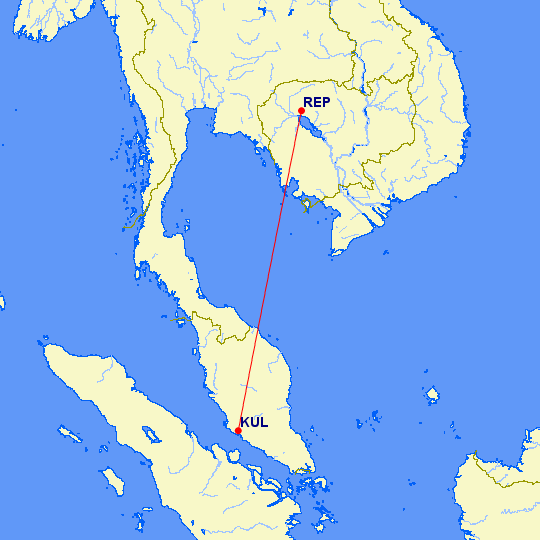
As mentioned in yesterday's blog post, I woke up in the capsule hotel around 3am with only 2 hours of sleep. I laid in bed for a while trying to fall back asleep, but eventually decided to bite the bullet and get up to shower and get ready for my flight. After a refreshing shower, I made my way to the check-in area for my flight.
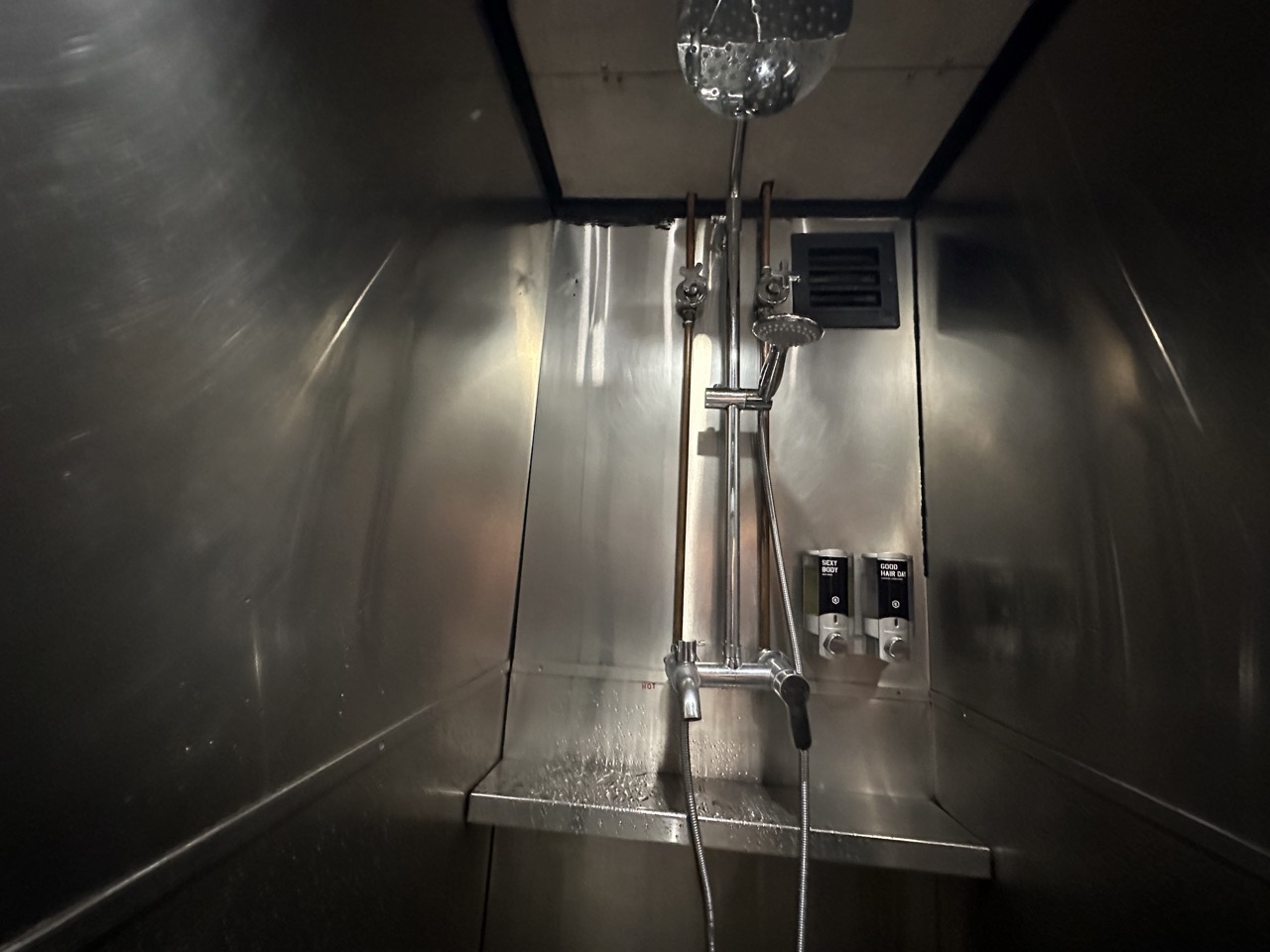
KLIA2 is Air Asia's primary hub, so they control essentially the whole terminal. In front of the immigration entrance there was an airline employee making people weigh any large carry-on items. I was not sure if he would notice my backpack and stop me, and I knew it was over the 7kg limit, so I decided to check my bag to avoid this issue. When booking this flight, I pre-booked a package that included 25kg of checked luggage, a meal on the flight, and the ability to pre-select my seat. With all of this included, the total cost of my flight was still only $60. Air travel in south east Asia is very affordable!
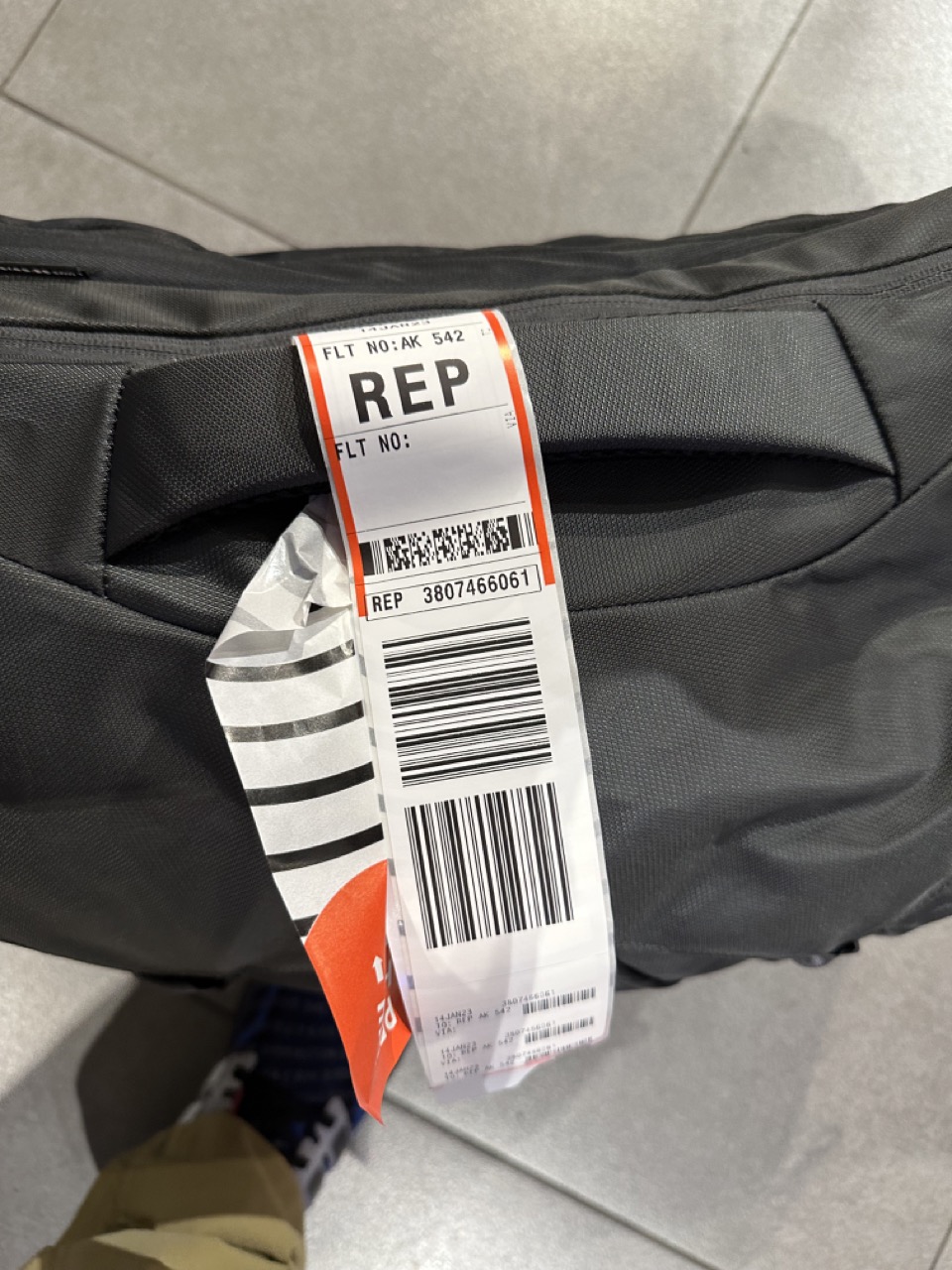
I made my way through immigration and into the main terminal. It was too early for any restaurants in the food court to be open. The only open restaurant was Costa coffee. The international departure section of KLIA2 has three piers: L, P, and Q gates. You go through security at the entrance of your pier. My flight departed from gate P9.
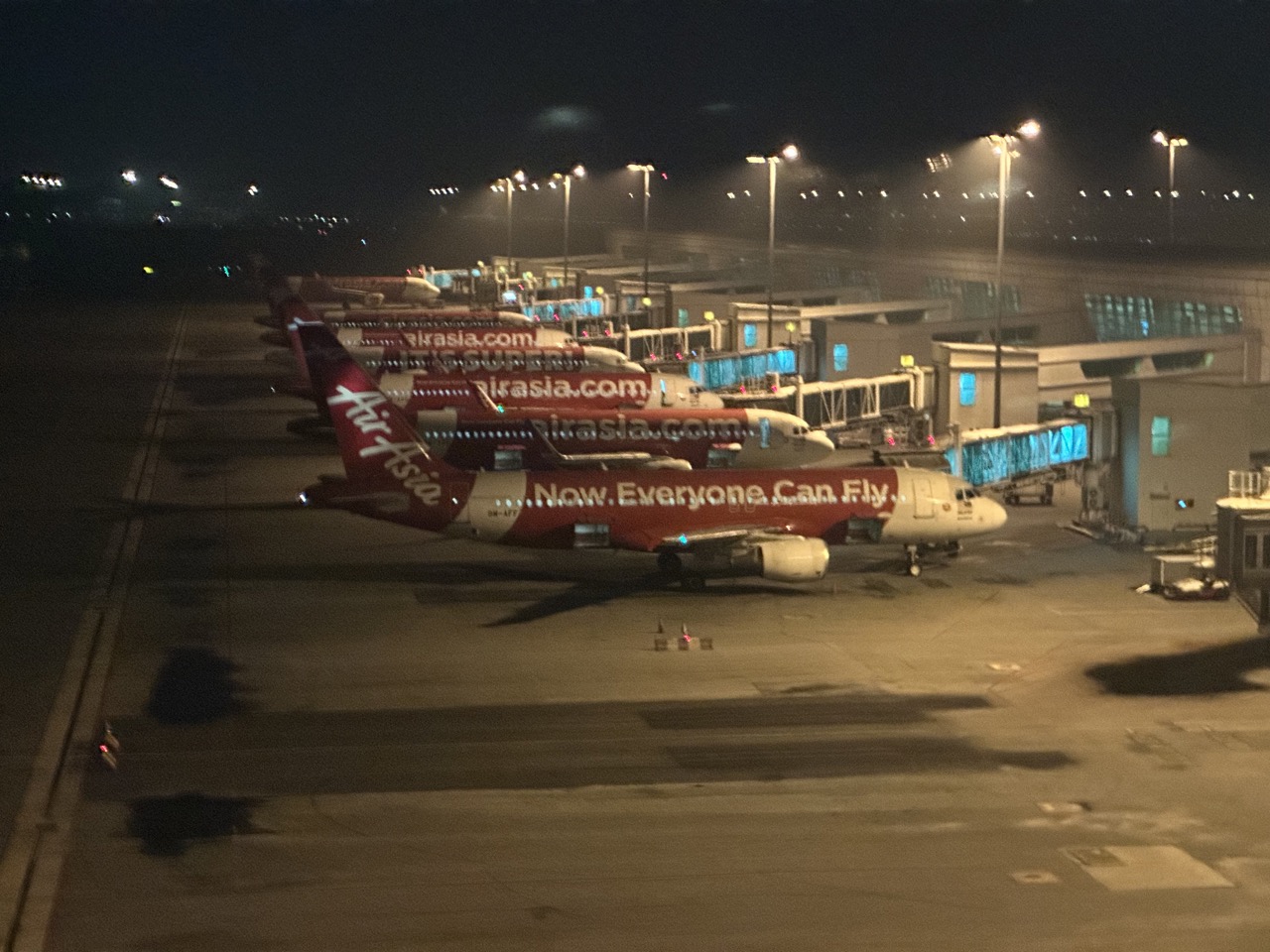
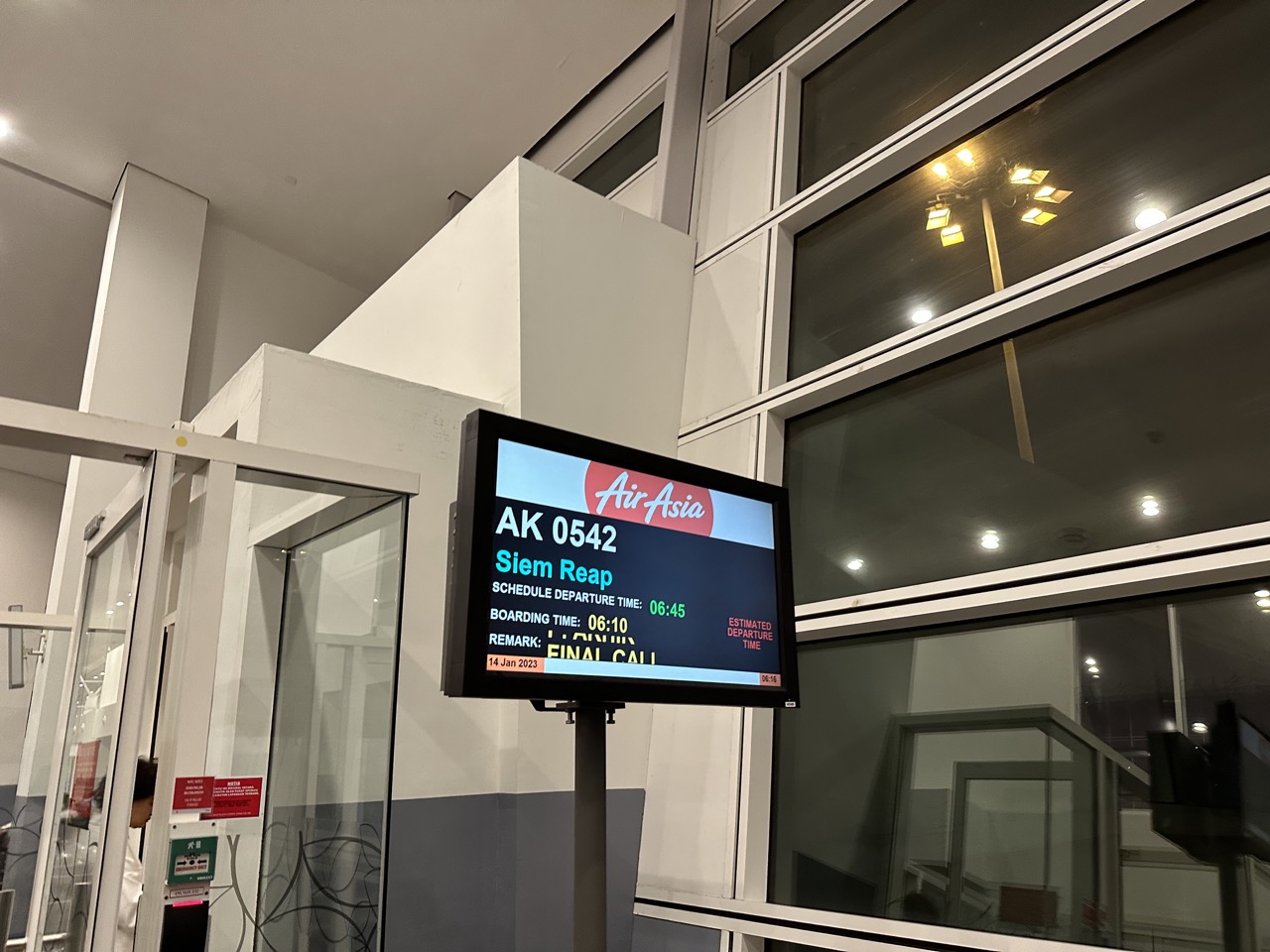
I boarded the flight towards the end because I was assigned to zone 3, the last boarding zone. There were two Malaysian Chinese standing in my row: When I pointed to my seat they said they had been waiting for me, they didn't want to get comfortable until I came and sat down. The flight took off and food was served. They first went through the entire cabin and gave people who pre-booked meals their food. Then they went through and sold food to other passengers. Finally, they went through the cabin doing duty free sales. Needless to say, this process took up the entirety of the two hour flight. For my meal I selected nasi lemak, which is a typical Malay-style breakfast dish, and is often considered the national dish of Malaysia. It consists of coconut rice, chicken, egg, peanuts, anchovies, and sambal. It was quite delicious, though a little spicy. AirAsia claims their nasi lemak is "world famous," but since it is a relatively unknown dish that they are serving on international flights, they may win by default.
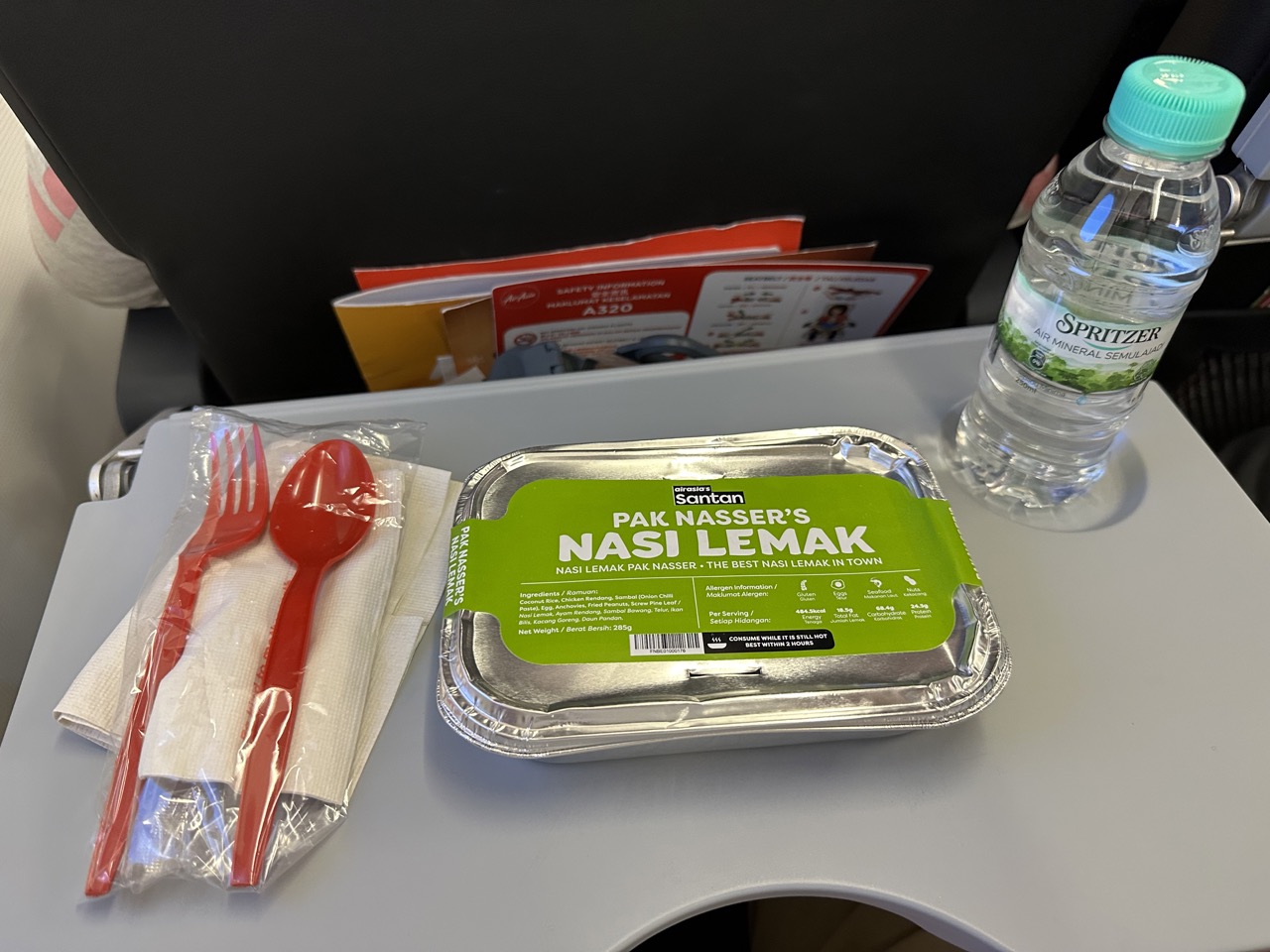
After a short and easy flight, we landed in Siem Reap. I was not one of the first people off the plane, but was the first to make it to the immigration queue because after descending down the stairs and walking across the street, most people just stood there to either take photos of the plane we just flew in, or to wait for other members of their party. Since our plane was the only arrival at this time, our bags came off immediately, and I made it through immigration and customs in no time at all. Outside the building, I was greeted by a tuk tuk driver from Uncle Sam Villa, my hotel, who helped me carry my backpack and gave me a ride.
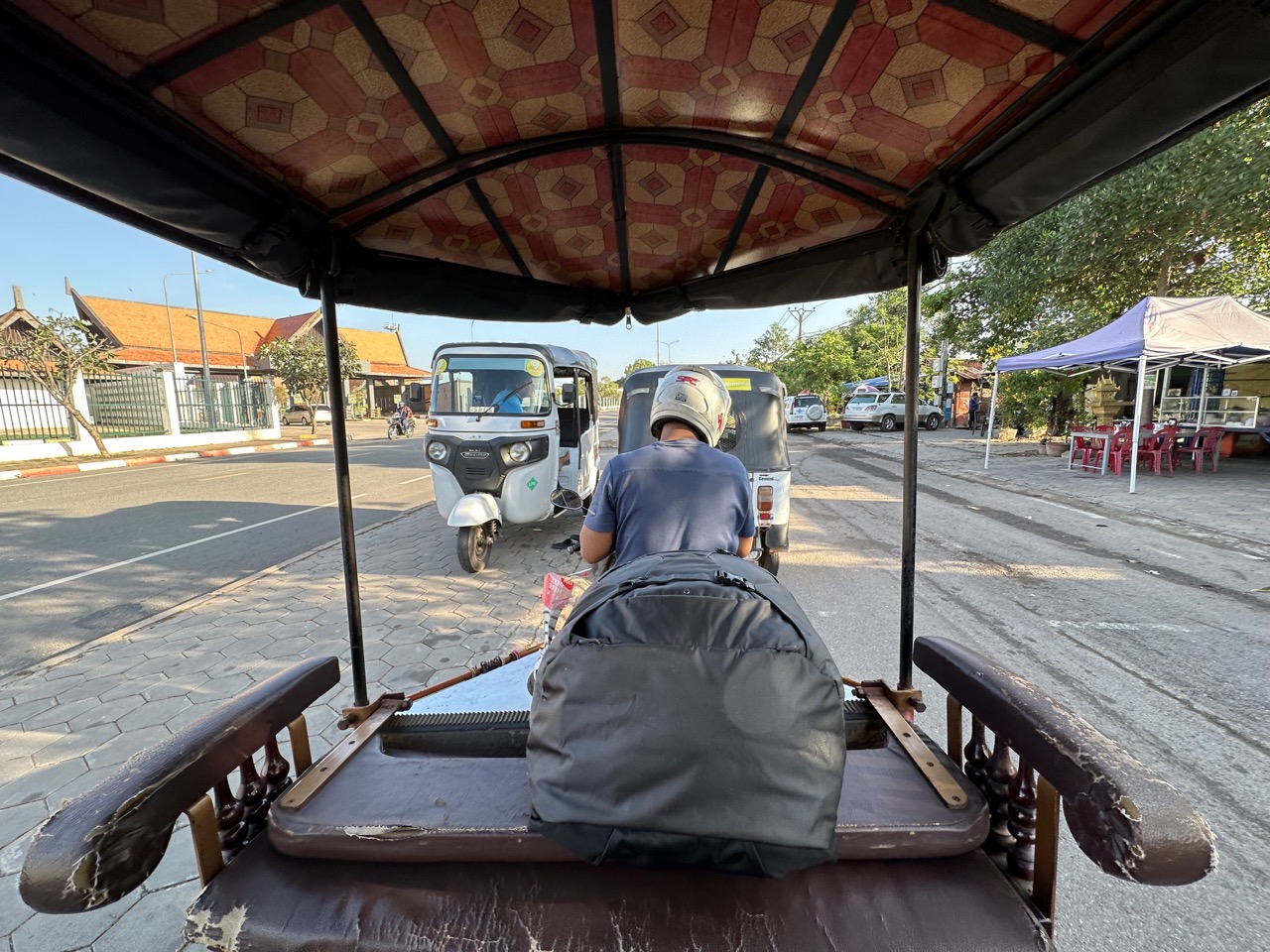
Since it was only 8am, my room was not yet ready. I left my bags at the hotel, and went for a walk around the Siem Reap town. I stopped at The Source Cafe, which came highly recommended on Google Maps, for some coffee and food. I went with an iced coffee with sweet milk, and had bacon and eggs. The coffee was delicious, but I don't know why I ordered more eggs: if you're keeping track, this is my fifth breakfast in the last 24 hours, and at this point, I was feeling a little nauseous and sick of eating eggs.
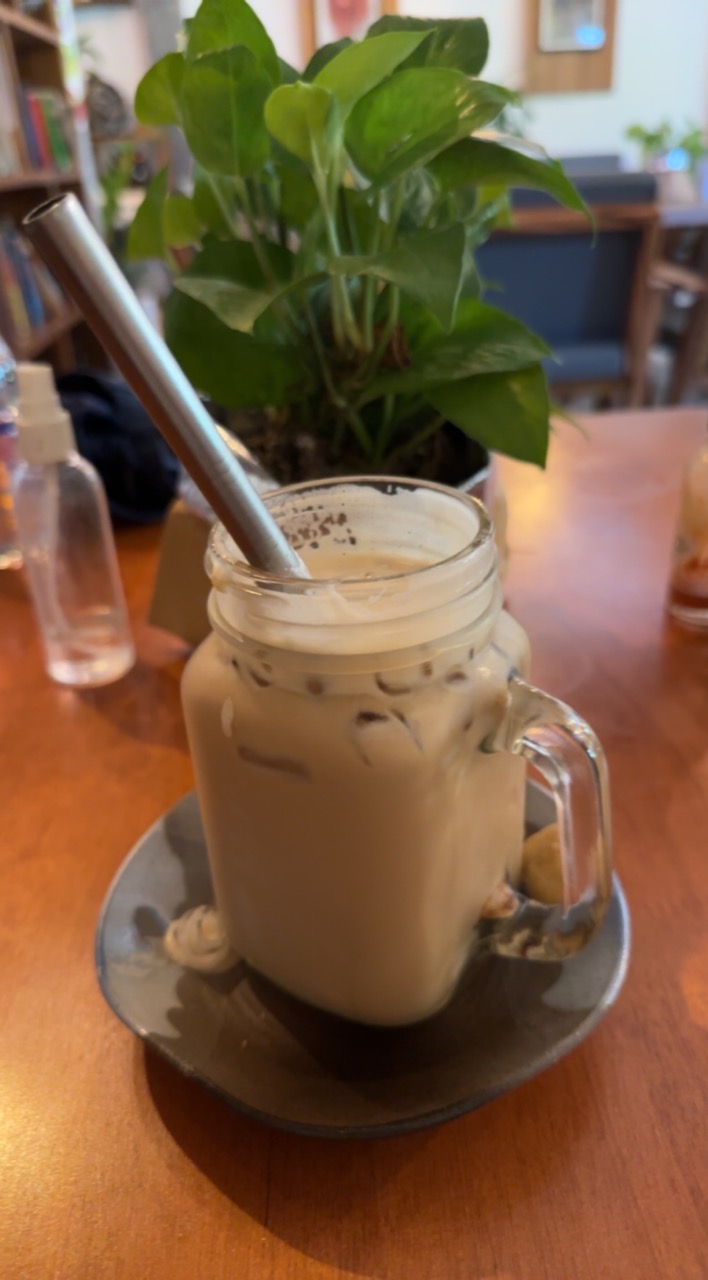
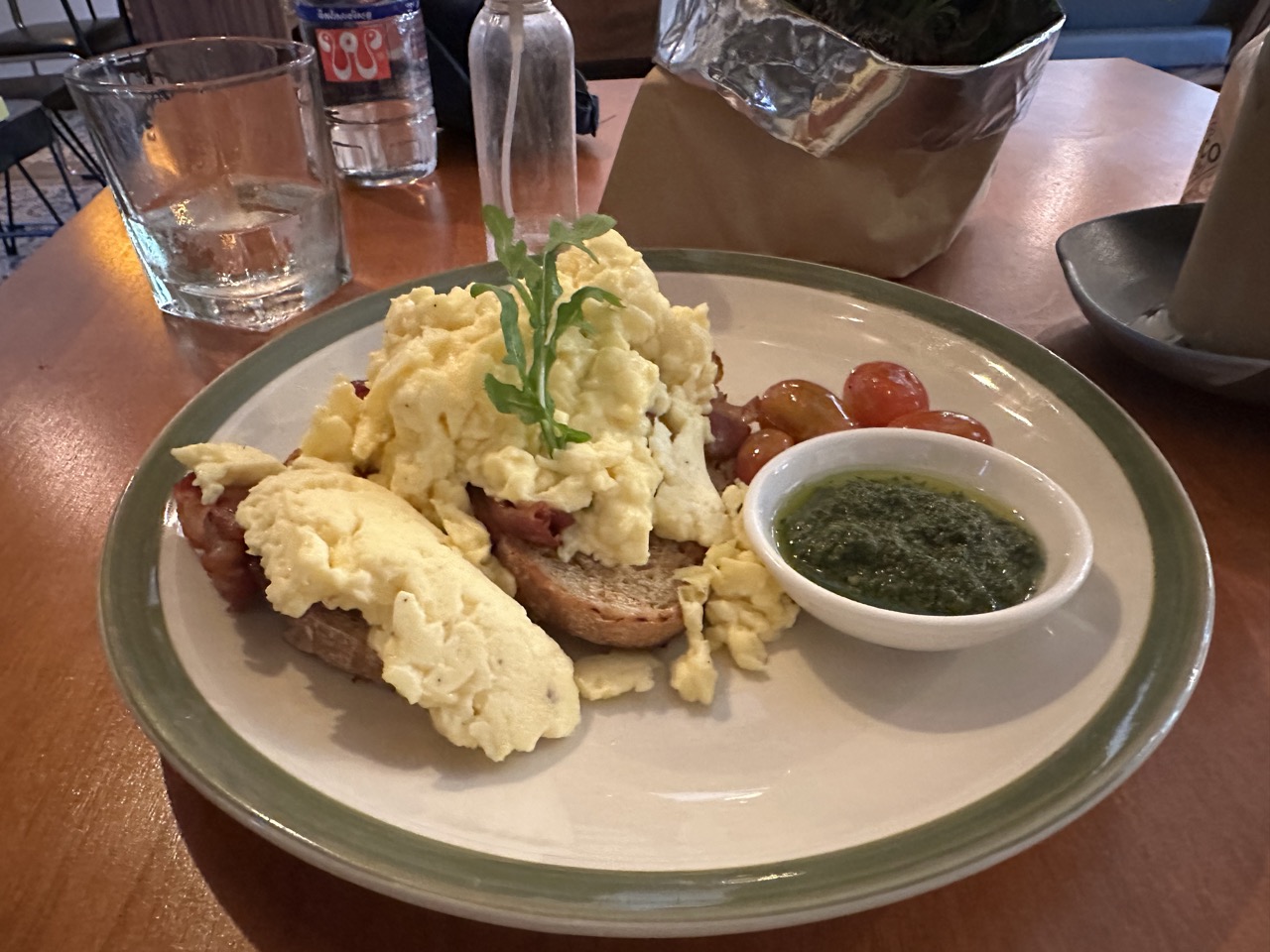
The entire meal was $7.50. Definitely not cheap by South East Asian standards, but also very affordable by American standards, especially for the quality of the food. In Cambodia, especially at places catering to tourists, prices are quoted in US Dollars, despite the Cambodian Riel being the official currency of the country. My understanding is that the Cambodian Riel is not traded on forex markets, and the dollar is so widely used, that most ATMs will only dispense US Dollars if you use a foreign card. However, US coins and $1, $2, and $5 are generally not used. Instead, for amounts less than $10, change is given in Cambodian Riel at the street rate of 4,000 KHR to 1 USD, which is only slightly worse than the official rate of 4,2000 KHR to 1 USD. For my $7.50 lunch I paid with a $10 bill and received a 10,000 KHR note in return (I was initially very confused, because the Khmer alphabet symbol for the number 1 looks exactly like a 9).
After lunch, I walked further north towards the Angkor National Museum, where I learned a lot about the history of the Khmer people, including the kings who built Angkor Wat and the surrounding temples. I also learned a lot about the Hindu and Buddhist religions, and there were lots of interesting artifacts on display.
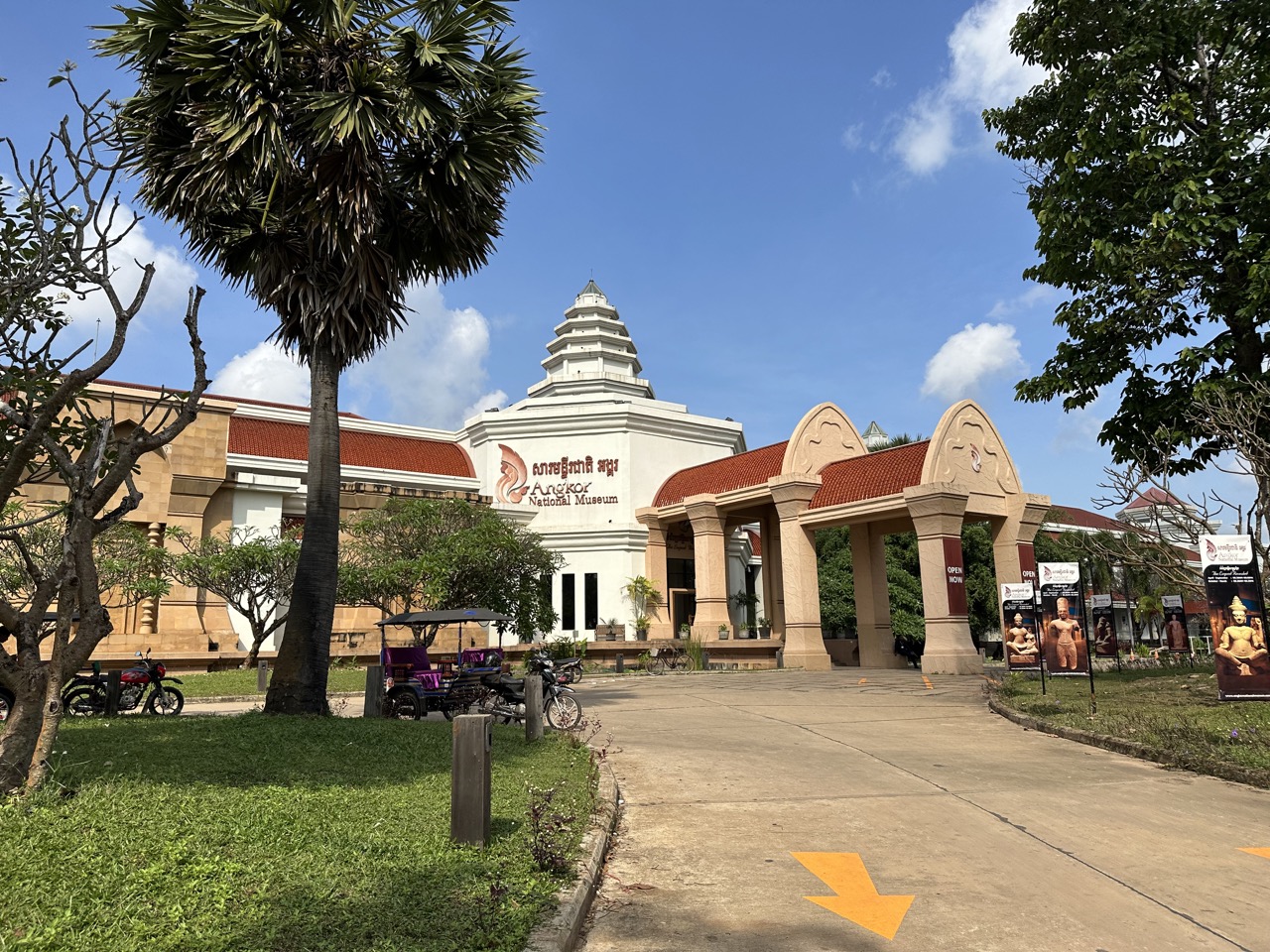
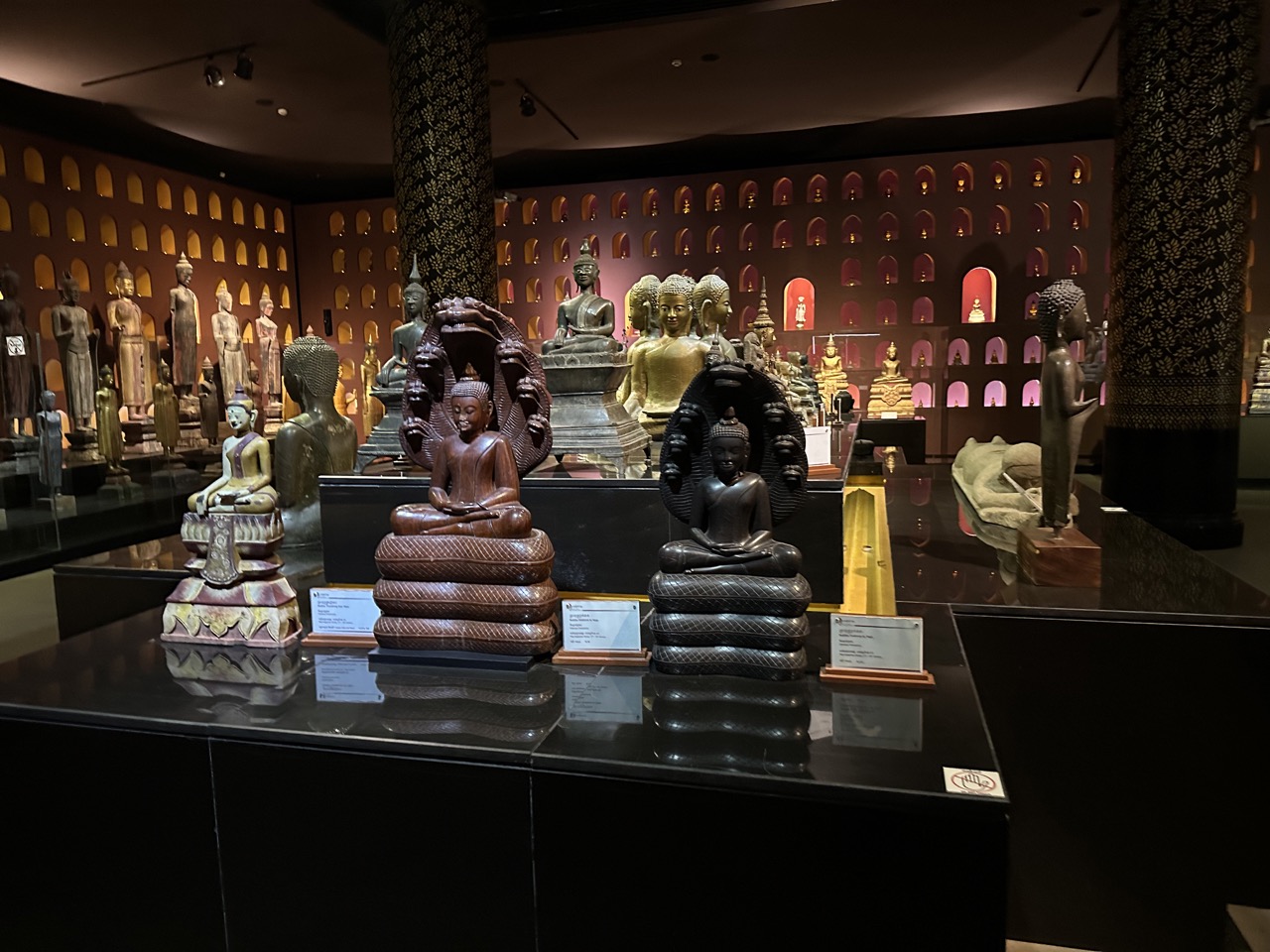
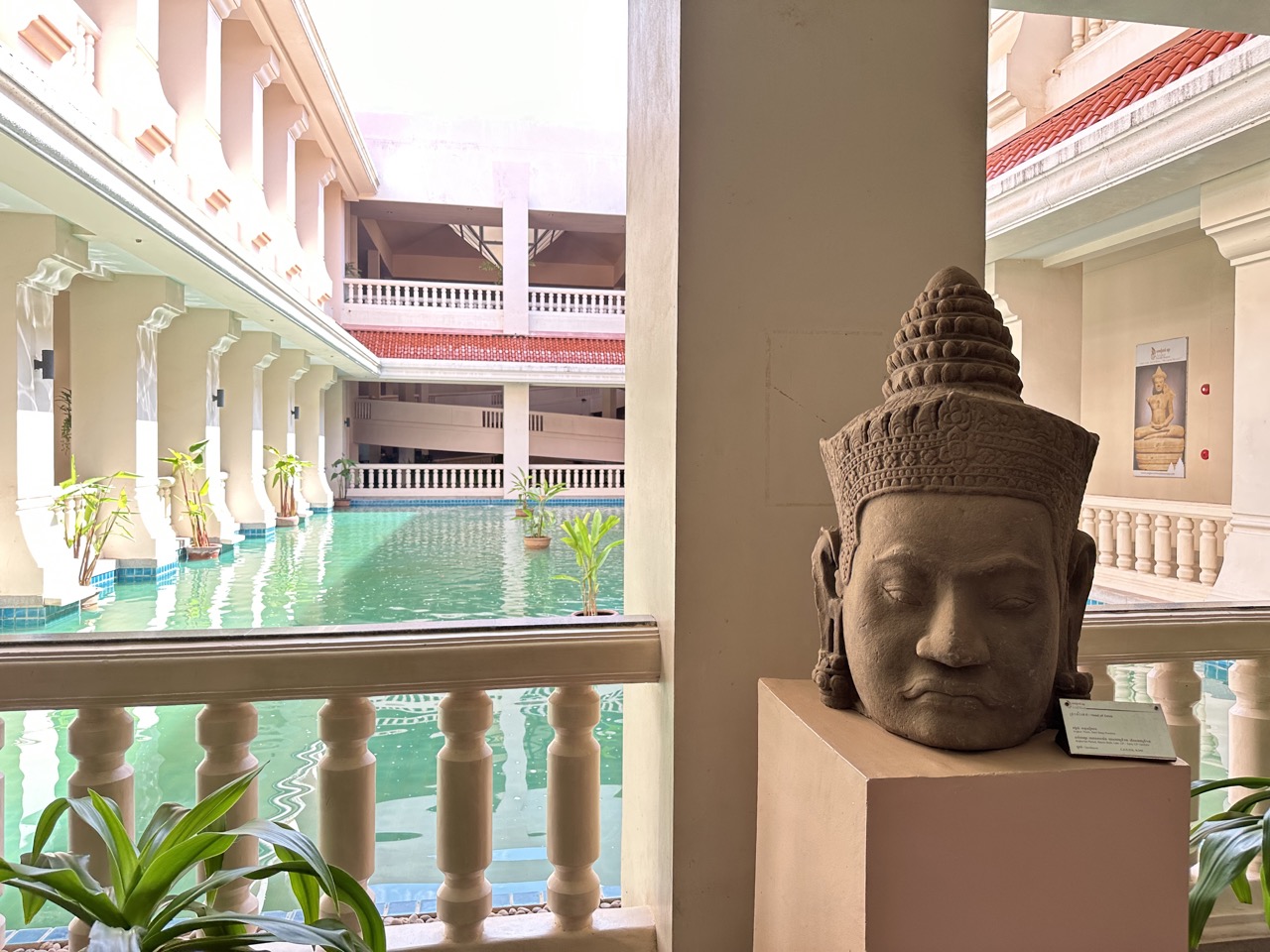
After my stay at the museum, I headed back to the hotel to finish checking in. Upon arrival, the receptionist told me my room was ready and that he had already carried my bags upstairs. I took a few minutes to get settled in.
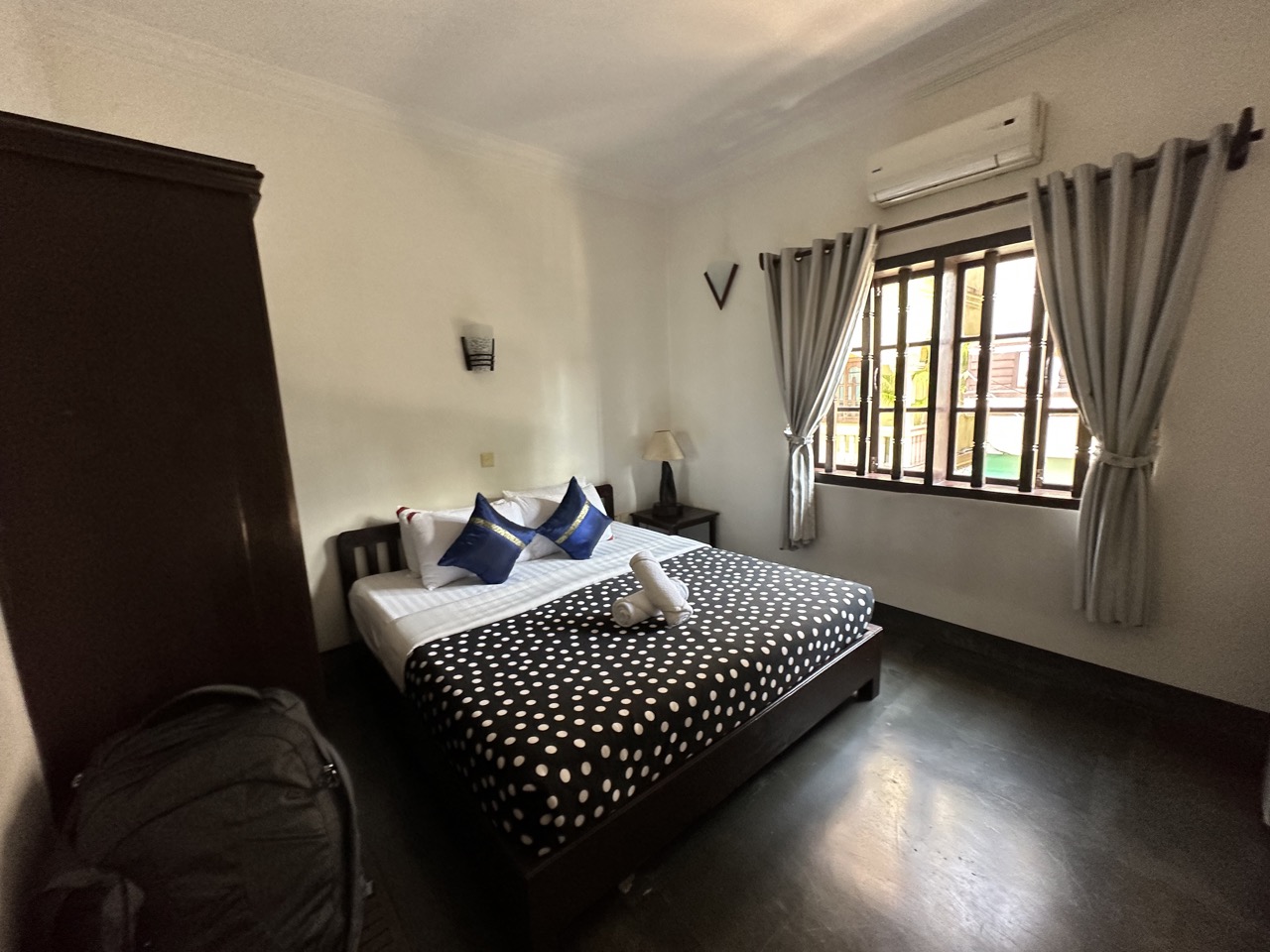
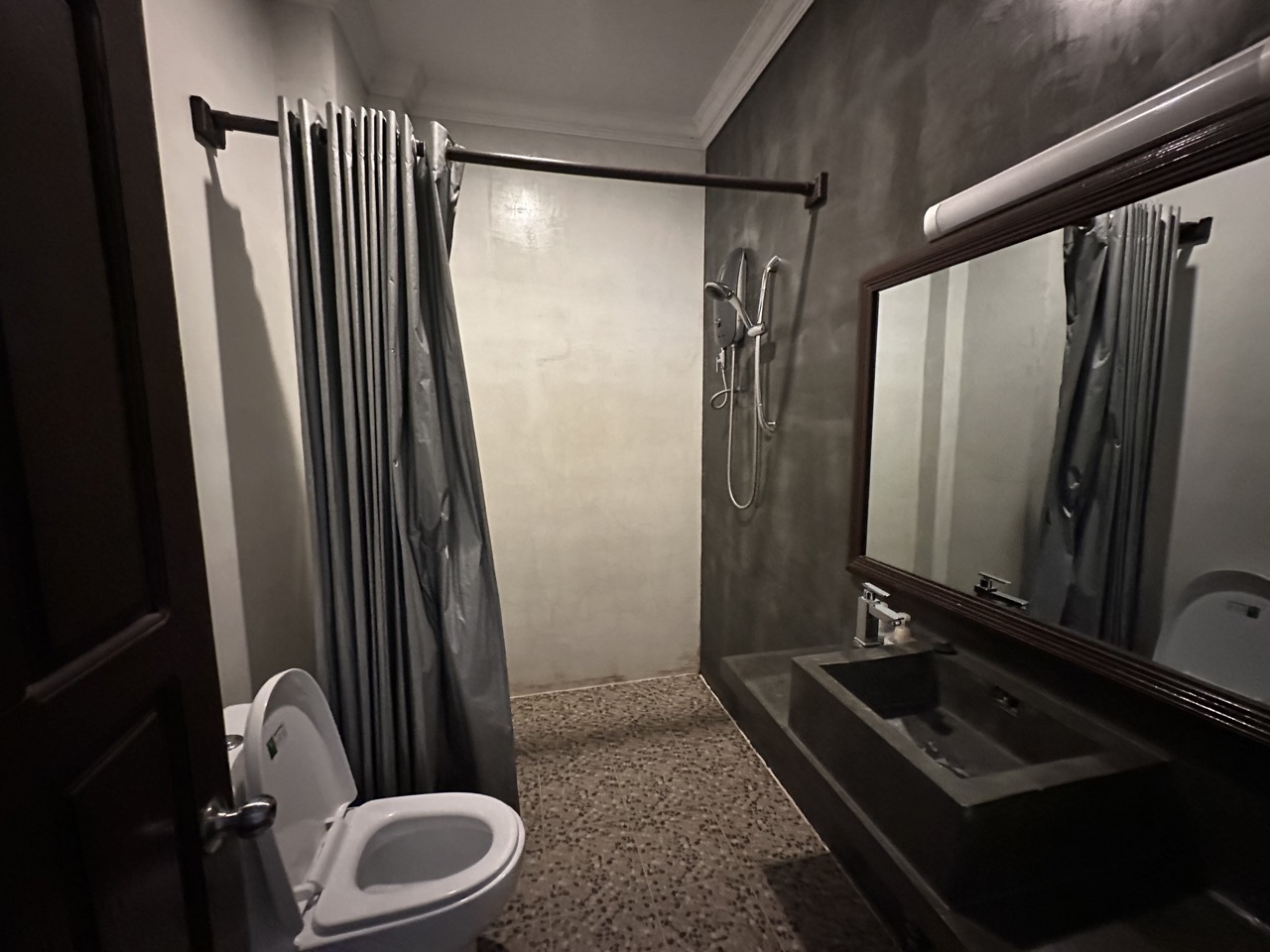
At 12:45pm I headed down to Pub Street, a popular nightlife location located only a couple minutes walk from my hotel. A couple hours prior I had called and put my name down for a cooking class at the Paper Tiger restaurant. Upon arrival, I was handed a brief subset of the menu and informed that I could pick what I wanted to learn how to cook in the cooking class. Guests can choose one starter and one main, and everyone gets the same dessert. I chose to make green mango salad with shrimp for my starter, and Amok with fish for my main. Amok is a yellow curry with a coconut base, traditionally made with fish and served in a bowl made from a banana leaf. It is considered the national dish of Cambodia. The staff divided the students in the cooking class into two groups. There was a group of two, a mother and son from the Netherlands. I was in a group of three with Charlotte and Natalie, two British girls who had been traveling for the past six months.
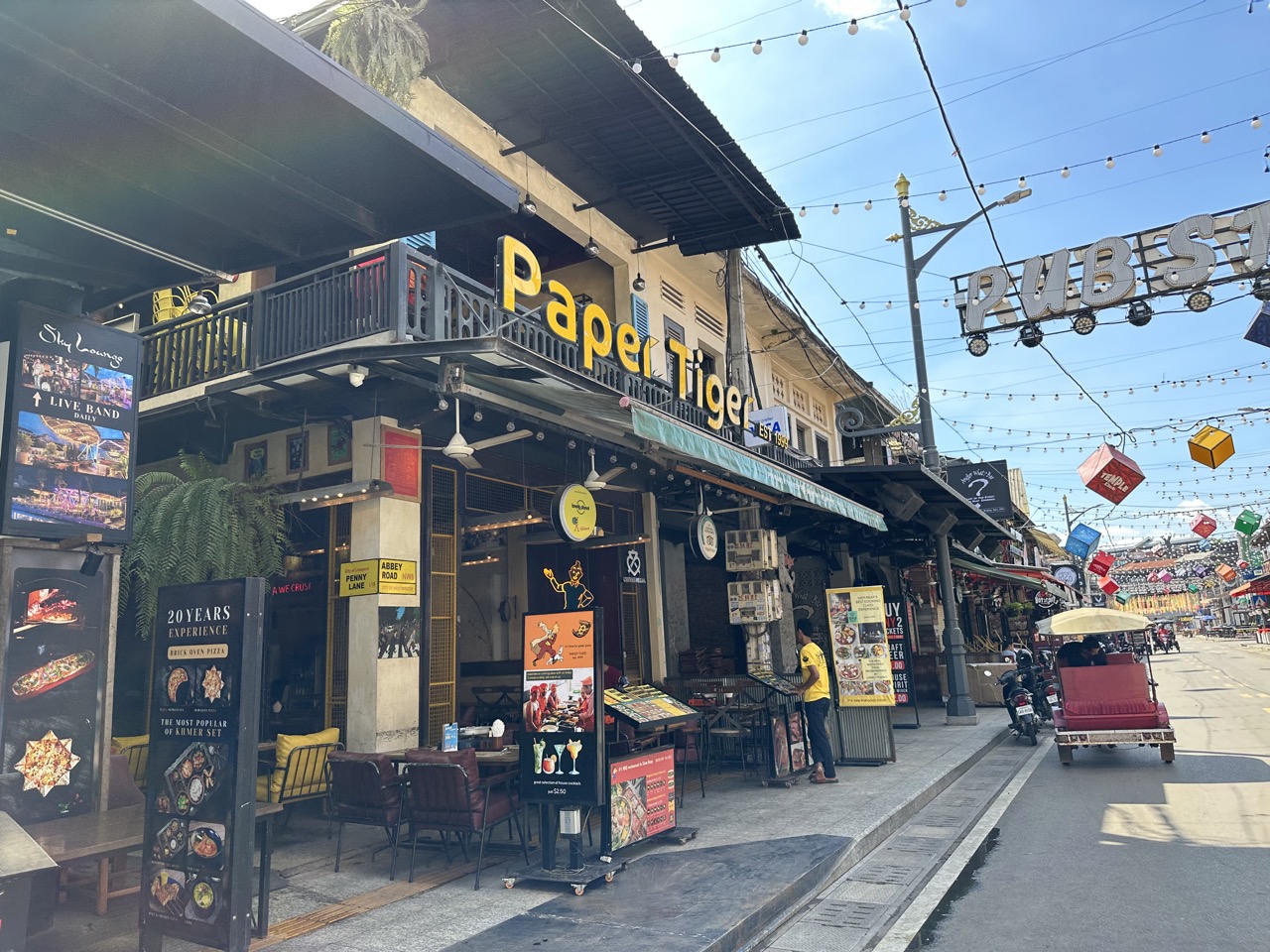
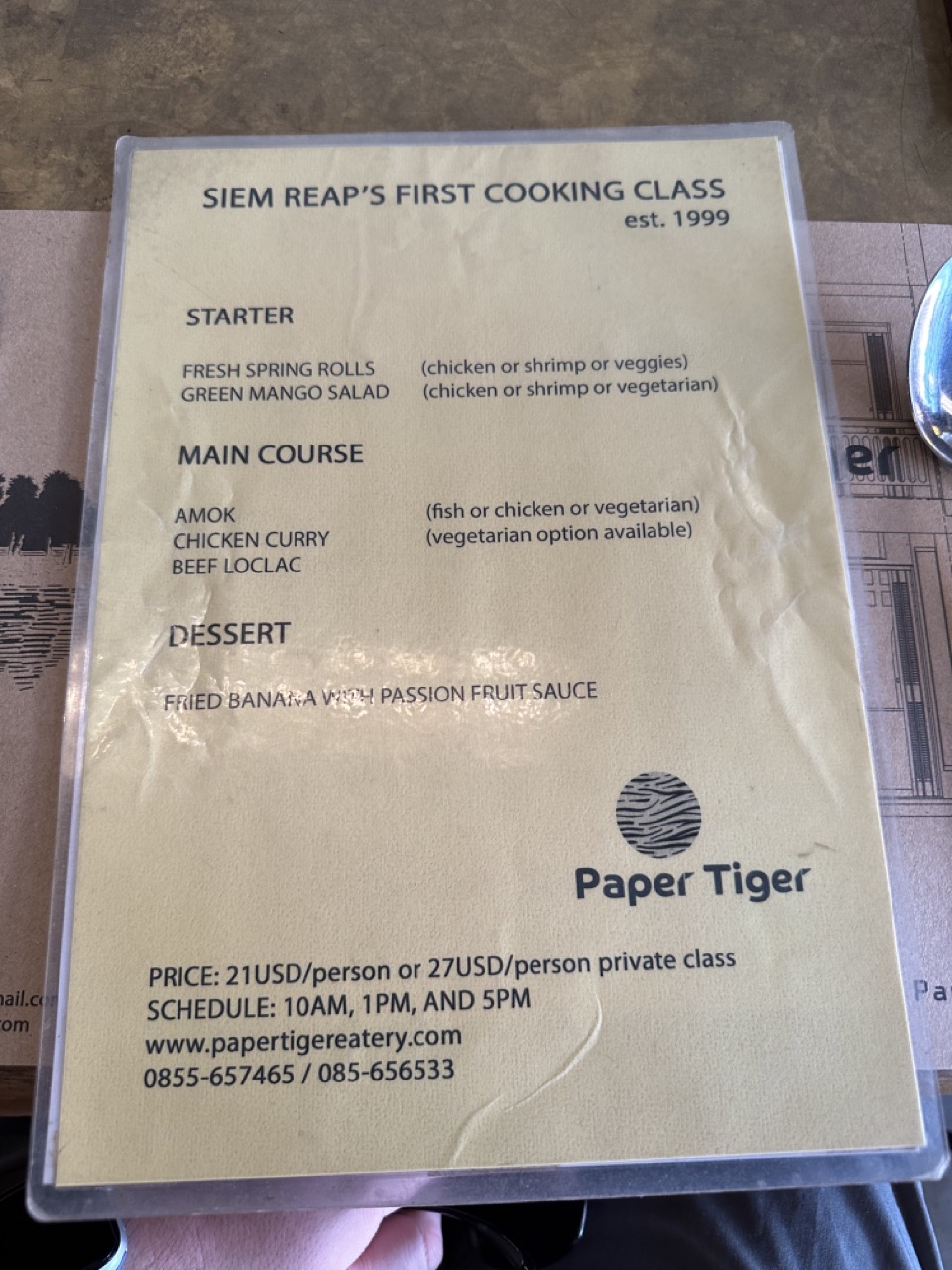
Before we started cooking, we walked a block over to Pshar Chas, the Old Market in Siem Reap. We briefly walked around while our teacher Channy showed us a variety of fresh fruits, vegetables, and herbs that we would be cooking with. After the brief tour, we returned to the restaurant and headed upstairs to get ready to cook. Laid out on the table were two bowls of water, one of which had lemon and lime slices in it. We washed our hands by first soaking them in the citrus water, then soaking them in the plain water.
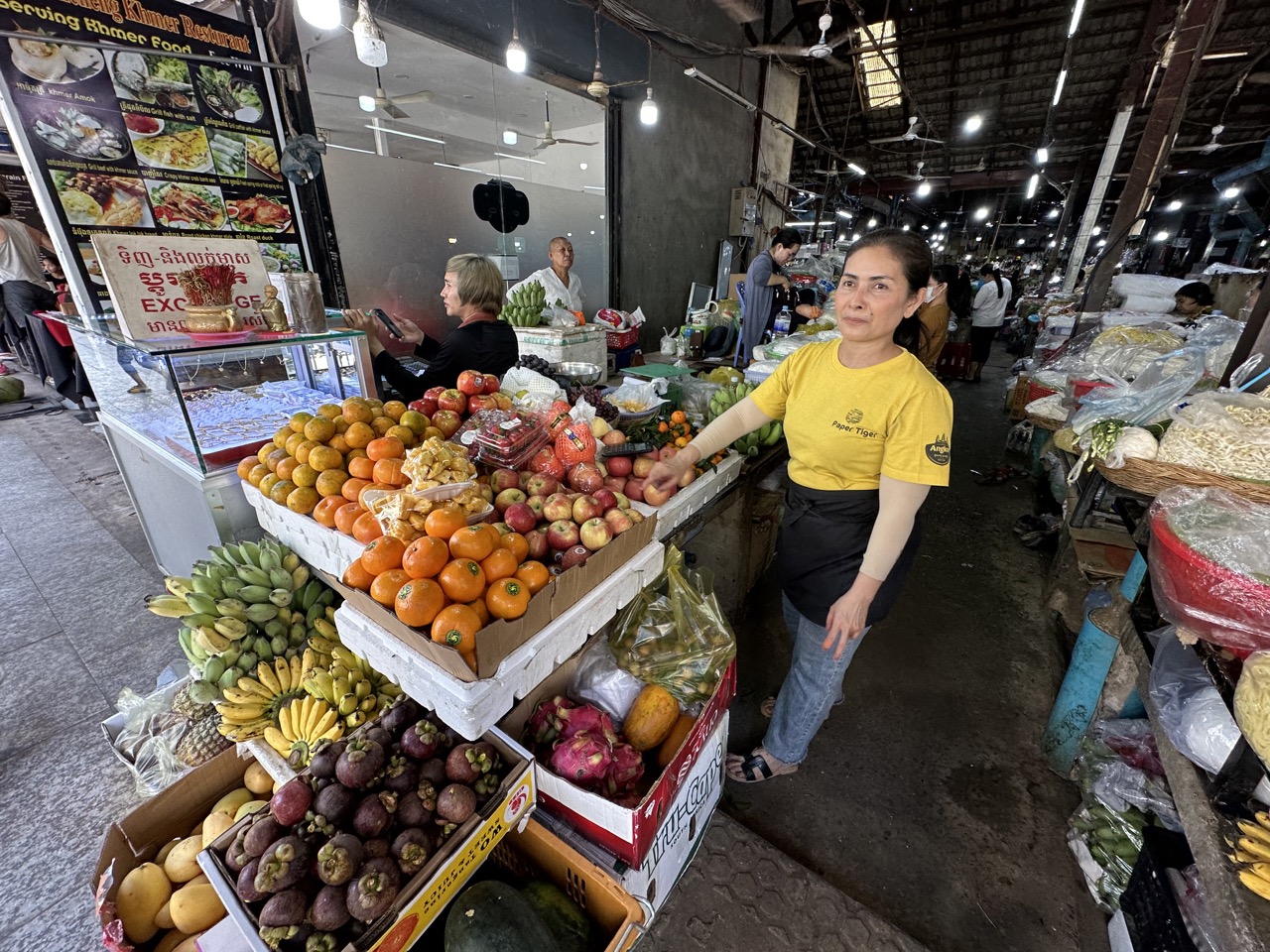
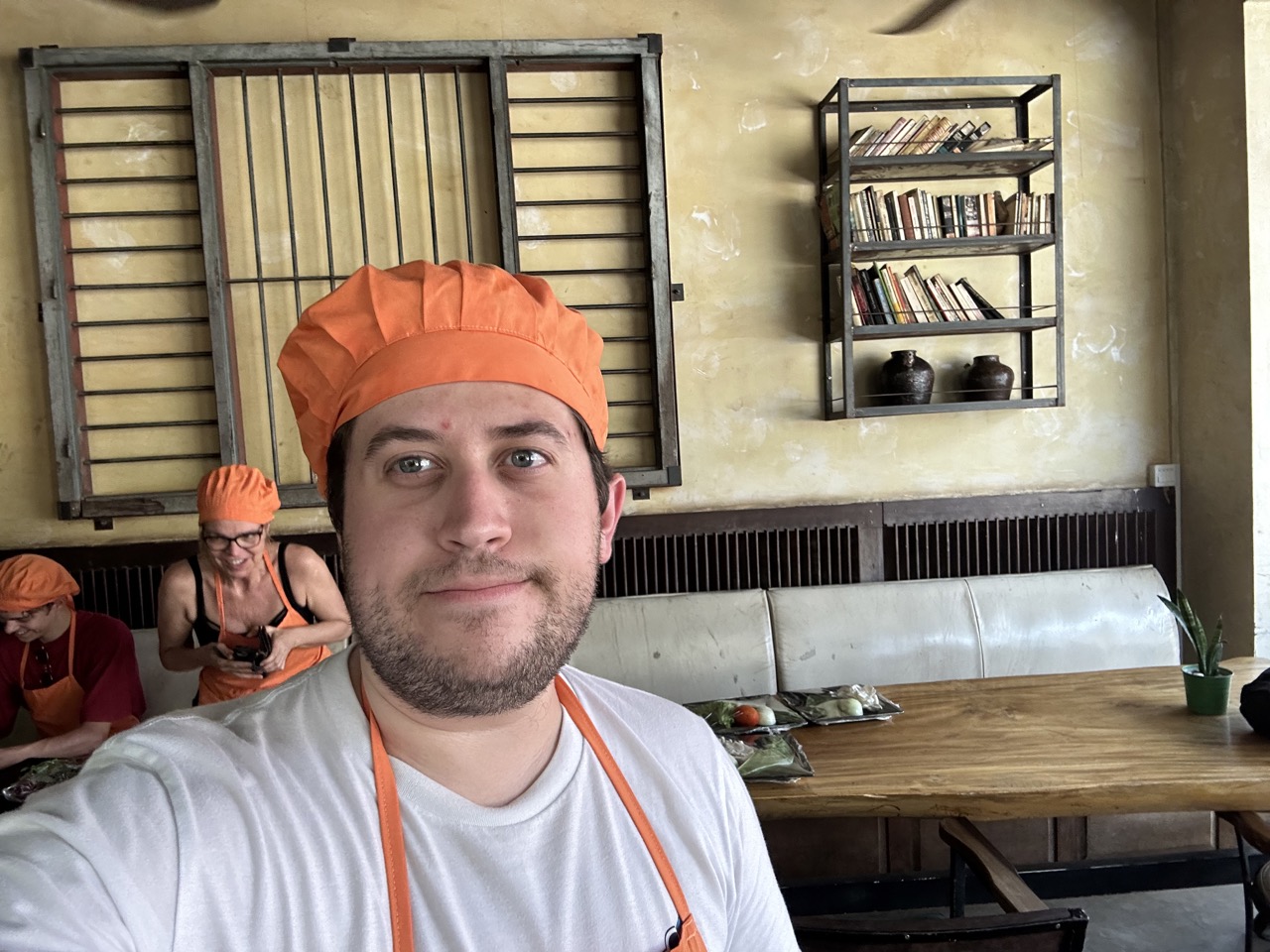
The first phase of cooking was ingredient preparation. I had to cut a variety of ingredients: for the mango salad, I used a vegetable peeler to get thin strips of green (underripe) mango and carrot. Then I cut a red onion and red cabbage normally. For the amok, I peeled apart some oyster mushrooms, chopped some kaffir lime leaves, and then diced turmeric, red chilli, garlic, shallot, lemongrass, and ginger. I took those latter six spices and pounded them into a paste using a mortar and pestle.
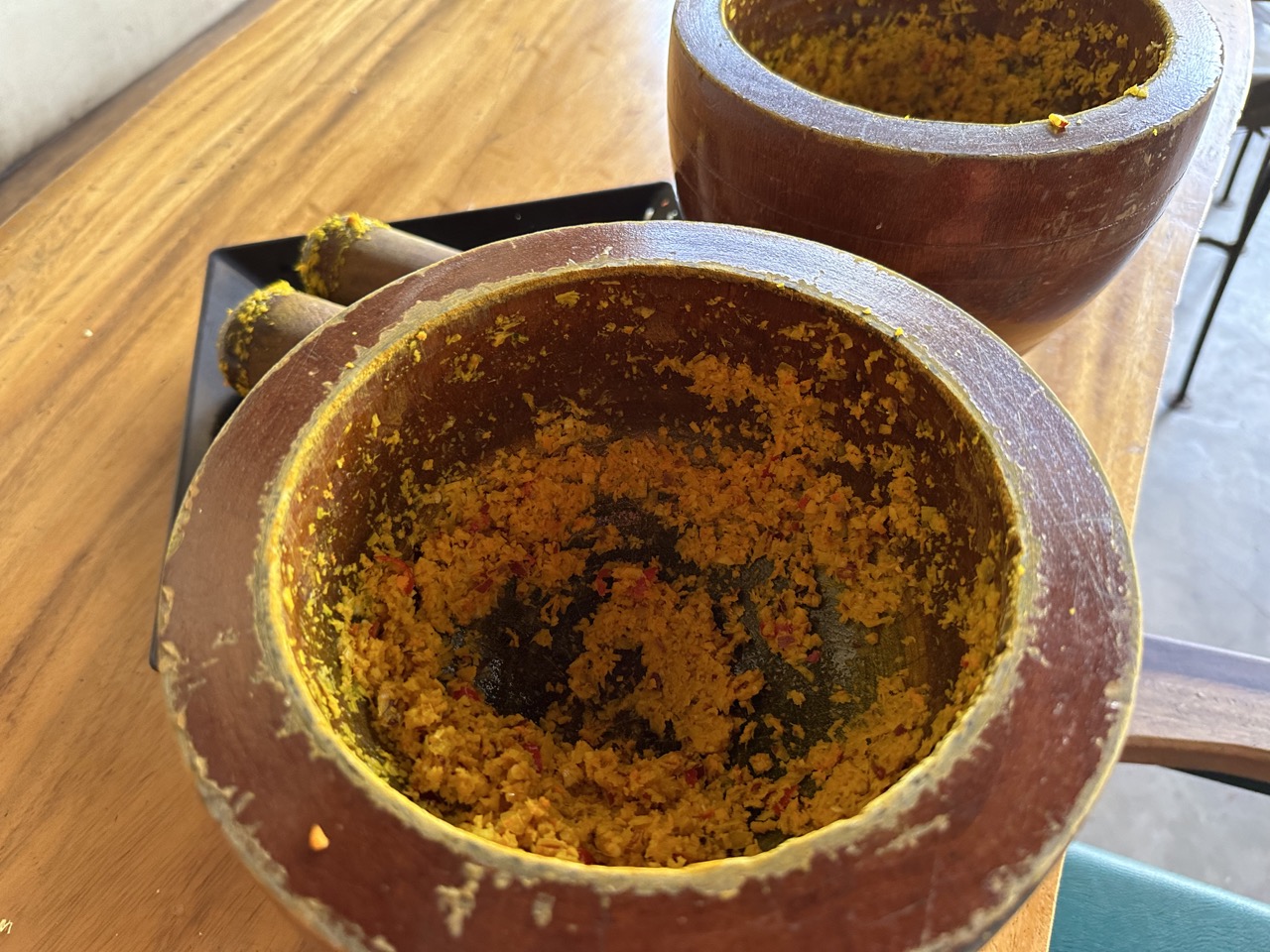
The next phase was the actual cooking. I mixed some chili, sugar, fish sauce, salt, garlic, and water and heated them together, and then let the mixture cool: this is both a spring roll sauce and a dressing for the mango salad. Next, I added some shrimp to a pan with oyster sauce, oil, and salt, and that cooked very quickly. This was the topping for my salad. Next, I added the fish and oyster mushrooms to a pan with oil, then added coconut cream, water, and my amok paste, and after it cooked a little added the kaffir lime leaves, and left it to simmer for 15 minutes. Finally, I got to add bananas, sugar, and water to a pan, and Channy repeatedly added vodka to it so I could flambee the bananas. This was very fun but also felt very dangerous. After the bananas had been cooked well, we added some passion fruit sauce.
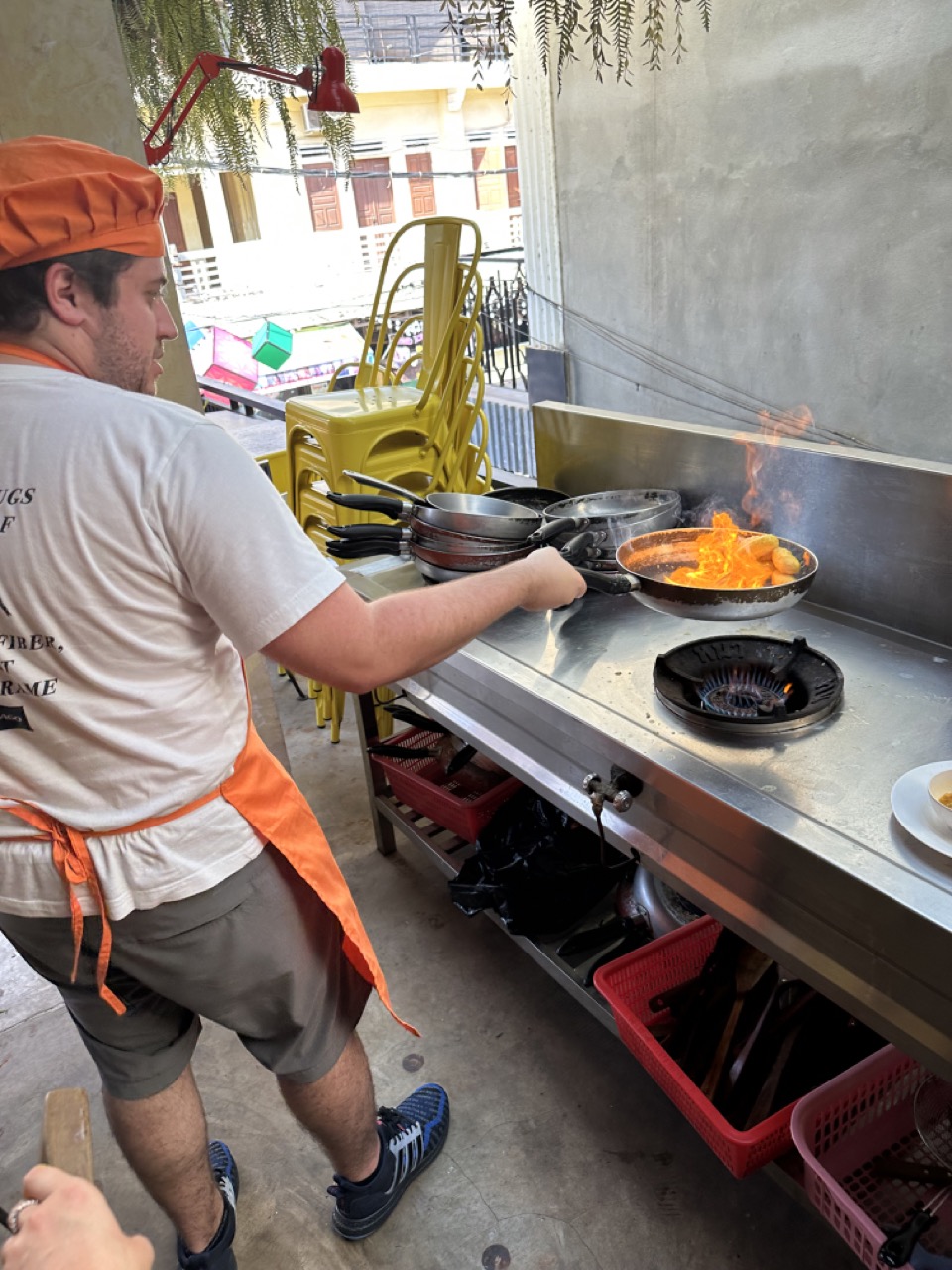
While waiting for the amok to finish cooking, I plated the mango salad and the bananas foster. We then wrapped the dishes in saran wrap (there was an almost excessive use of saran wrap, every time we had a plate that we were not planning to touch for the next minute, it was wrapped up; I believe this is to keep flies away). Channy tried to teach us how to cut banana leaves and form bowls and other garnishes for the plate, and also how to cut carrots into flowers for a garnish. I was not very good at any of this. Finally, the amok was finished and it was time to finish plating everything.
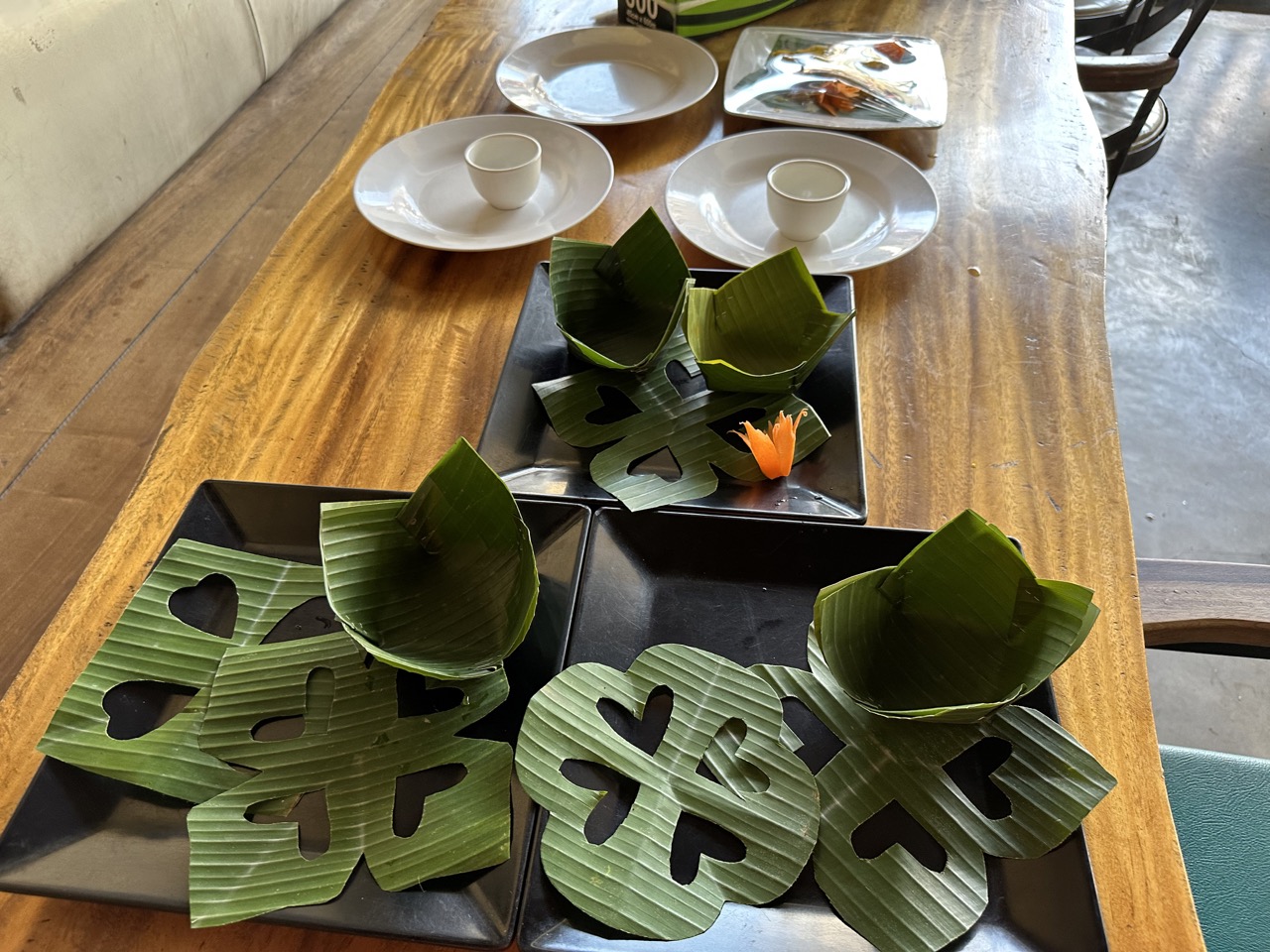
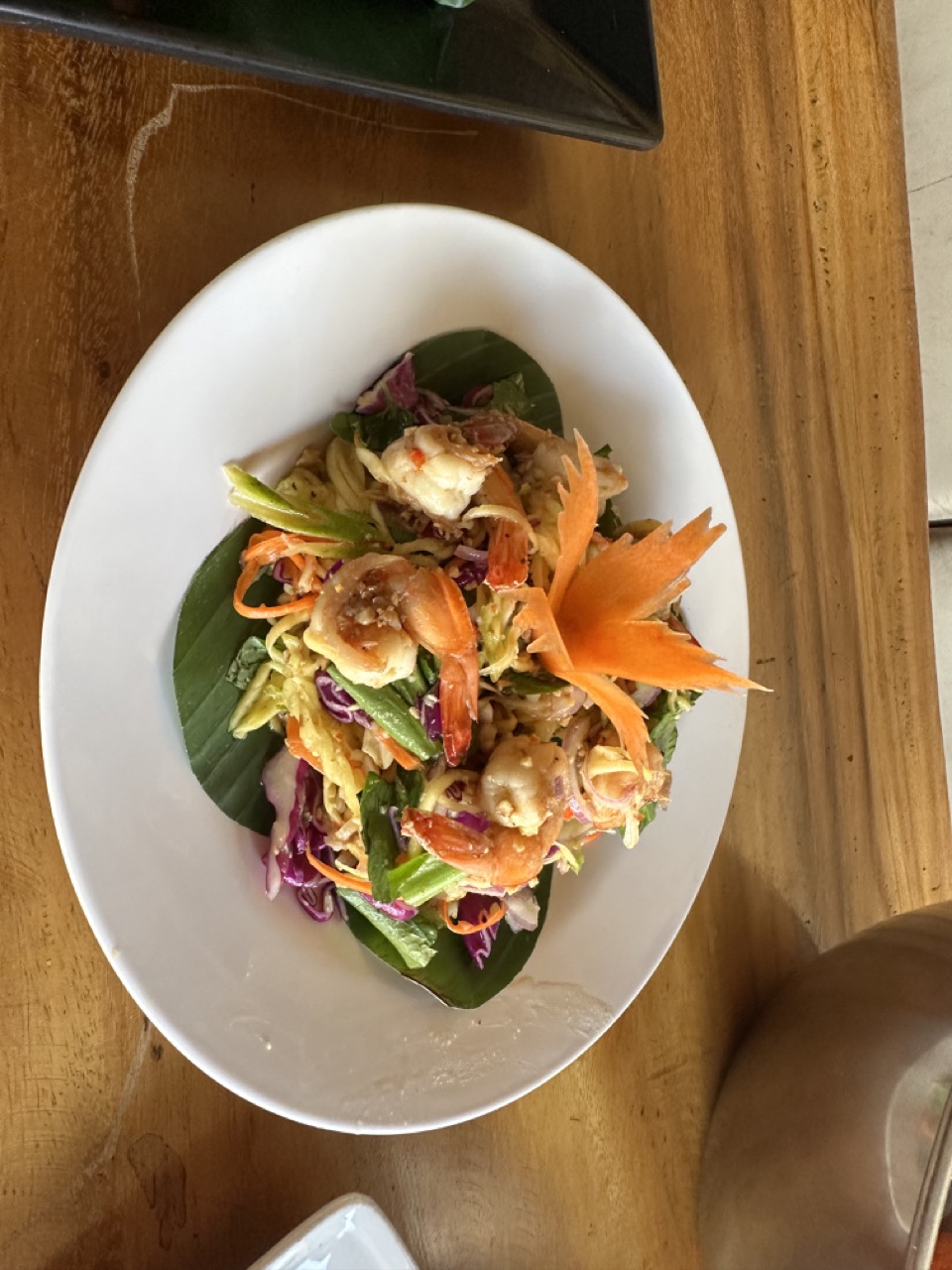
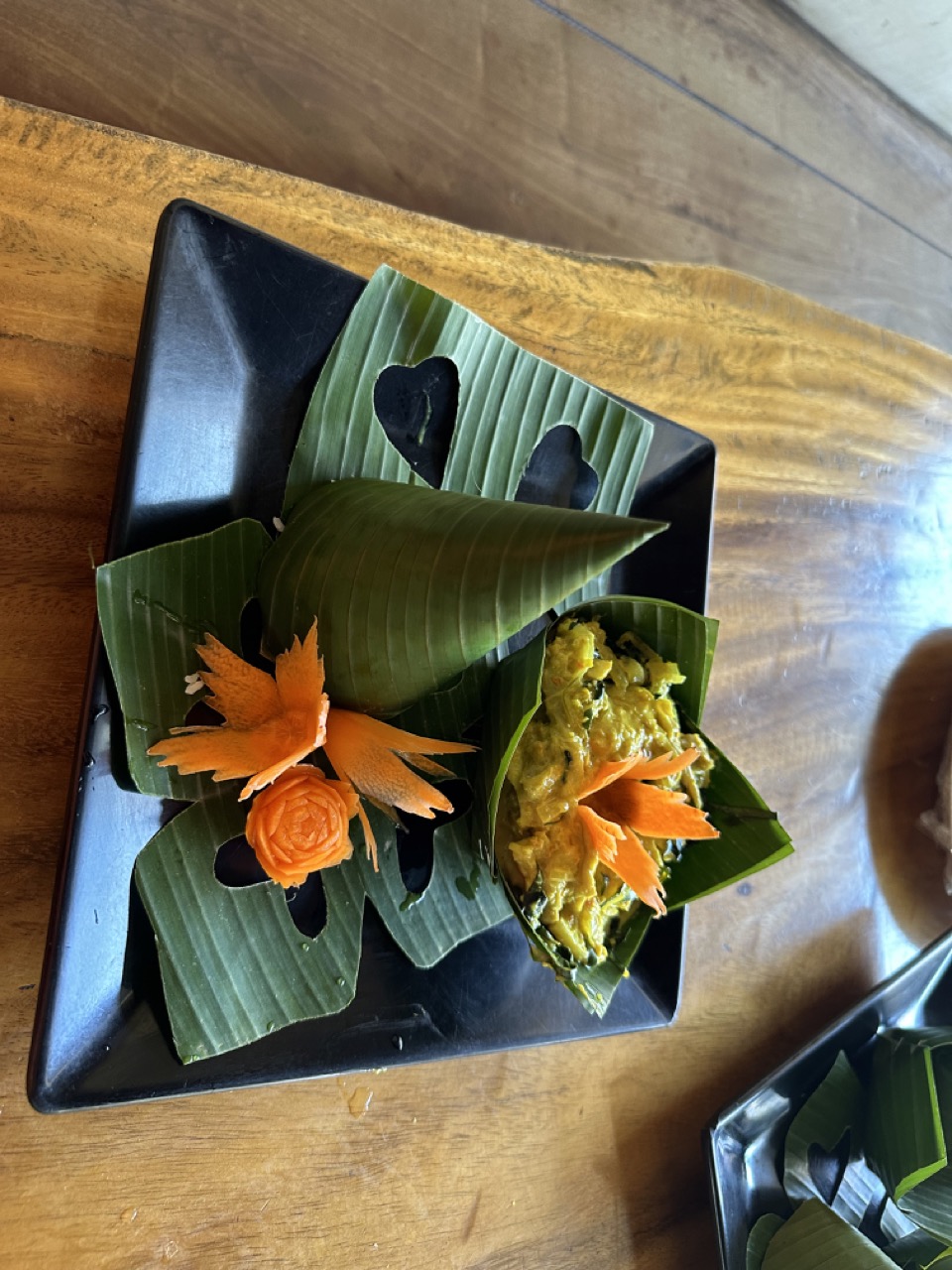
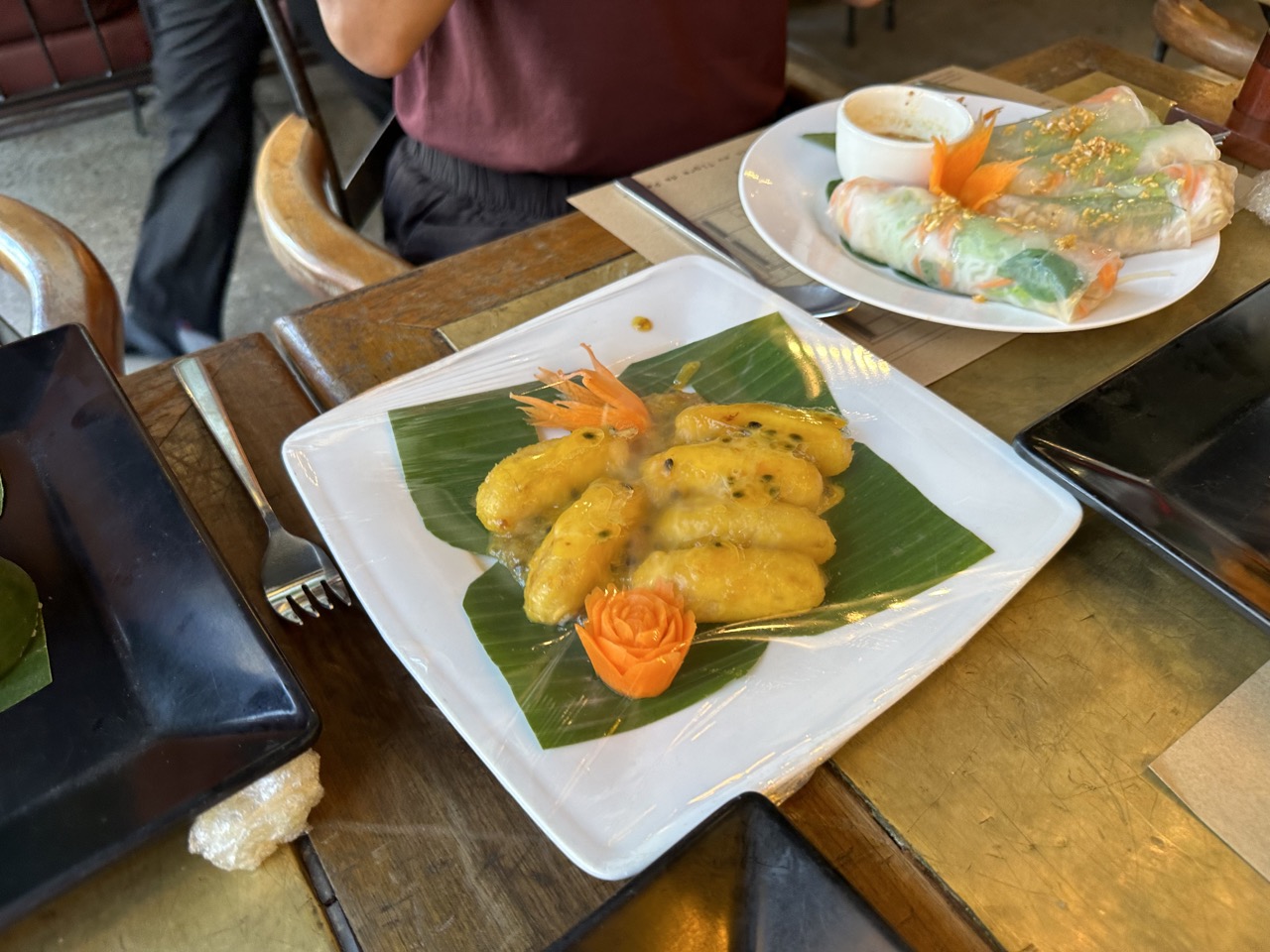
We carried the food downstairs. I ate about a third of it, but was still feeling a little nauseous from earlier and did not have much of an appetite. What I did get to eat was absolutely delicious, so I got a container to take the leftovers home. I walked back to the hotel and passed out around 4:30pm.